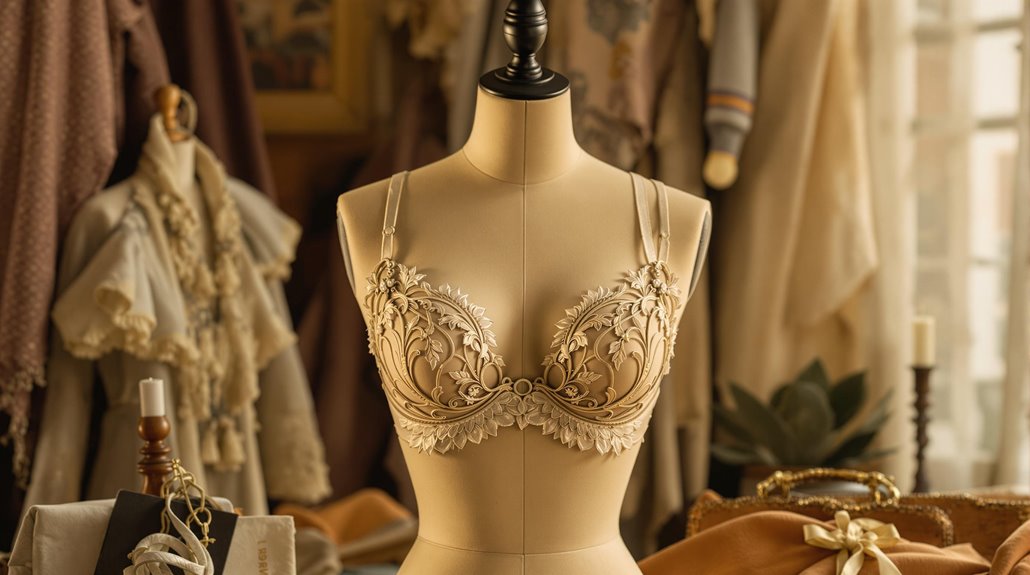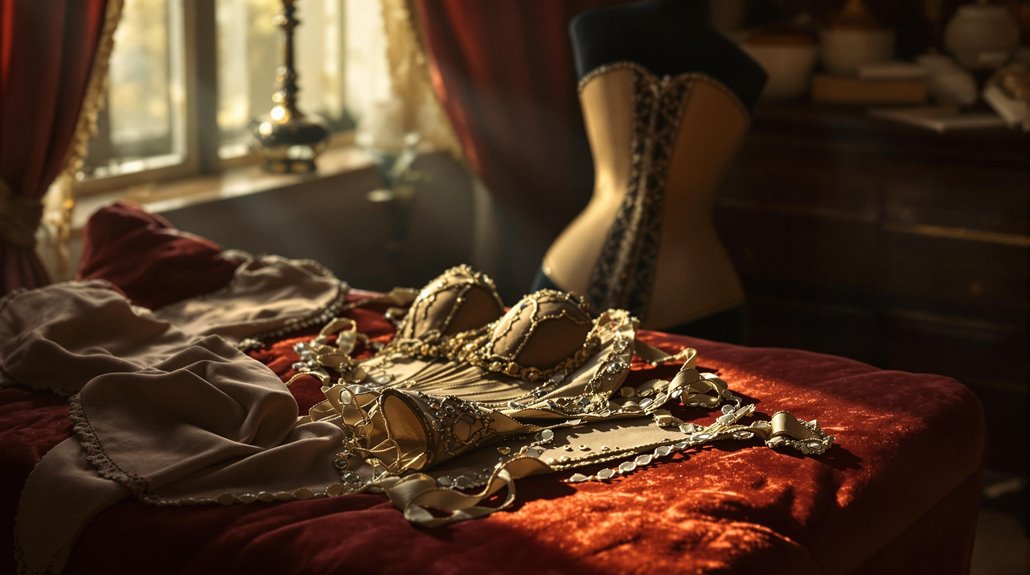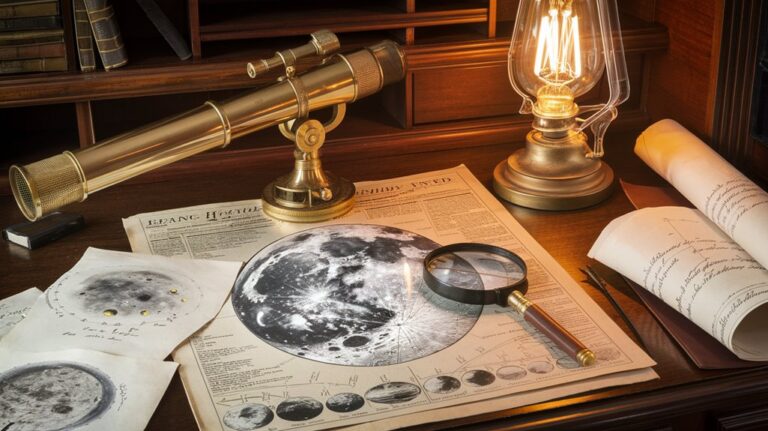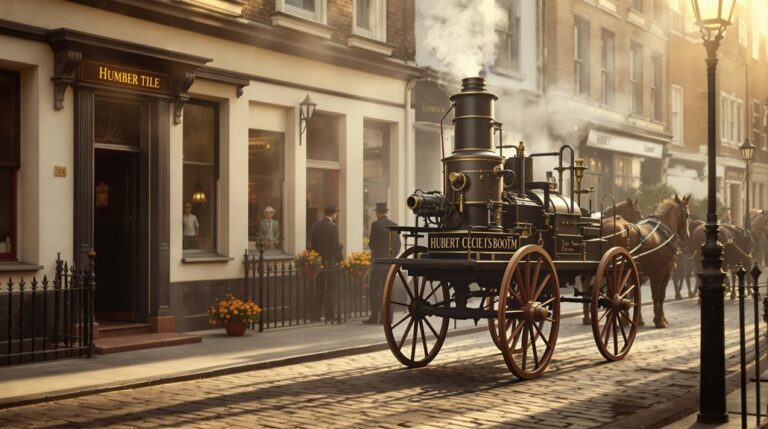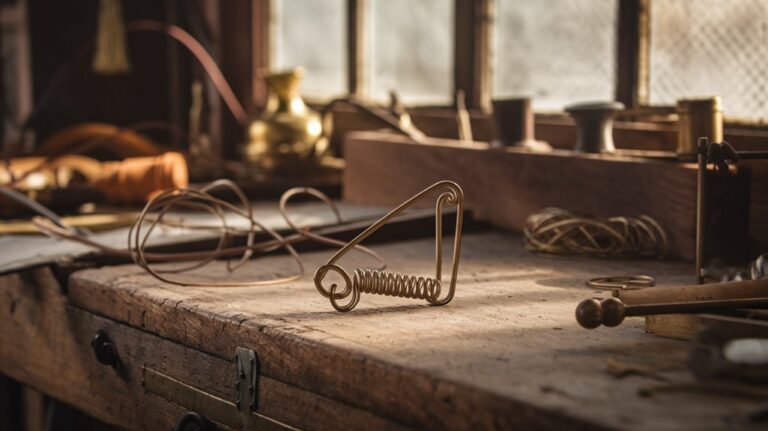Caresse Crosby’S Bra Design Freed a Generation From Corsets
You've likely never considered how a pair of handkerchiefs and some ribbon changed the course of women's fashion forever. In 1914, a 19-year-old socialite named Caresse Crosby crafted the first modern bra out of these simple materials, frustrated by how her corset showed through her evening gown. Her makeshift solution would spark a revolution in women's undergarments, marking the beginning of the end for the restrictive Victorian corset era.
The Young Innovator Behind a Fashion Revolution
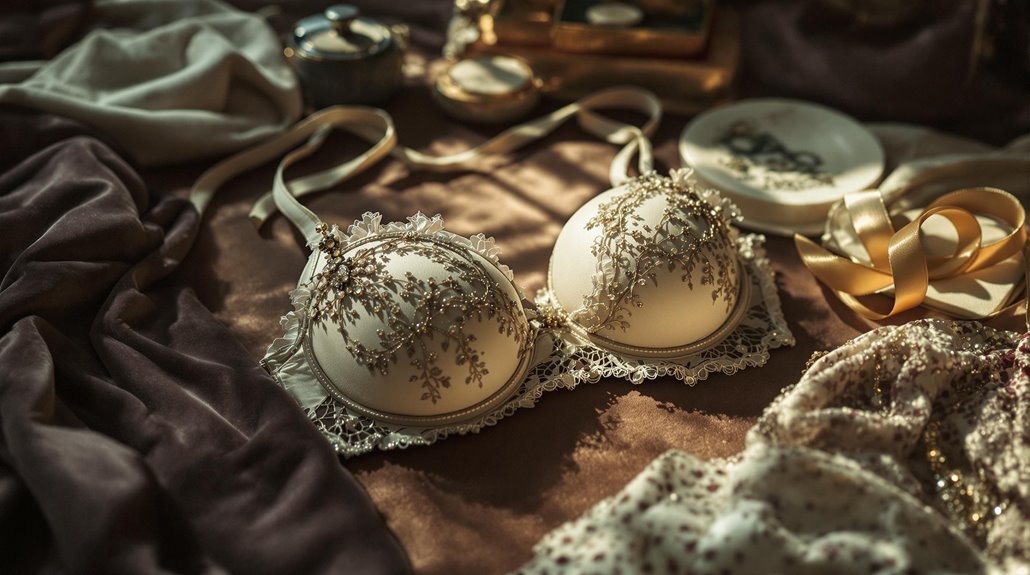
While many groundbreaking inventions come from seasoned professionals, Mary Phelps Jacob revolutionized women's fashion at just 19 years old. Growing up in New York's privileged society as "Polly," she received her education at prestigious institutions like Miss Chapin's School and Rosemary Hall.
But it was her creativity released before a debutante ball that would change fashion history forever. Frustrated with the rigid corsets of her era, Jacob's societal influence and innovative spirit led her to fashion a more comfortable alternative using two handkerchiefs and pink ribbon. By 1914, she would officially patent her modern bra design.
With help from her maid, she created the first modern bra prototype in 1910. When she wore her creation to the ball, the positive response from other women confirmed she'd struck upon something revolutionary. Her invention gained such immediate popularity that she received requests for copies from other women eager to try the new design.
A Simple Solution: From Handkerchiefs to History
The brilliance of Crosby's bra design lay in its elegant simplicity. Frustrated at a 1910 debutante ball with her restrictive corset, she crafted her handkerchief innovation using just basic materials: two handkerchiefs, pink ribbon, cord, and some thread.
Her design perfectly complemented the era's plunging necklines while offering a comfortable alternative to stiff corsets. Her invention would later earn her US patent 1115674A.
Unlike traditional corset alternatives of the time, her creation featured smart design elements that would influence fashion for generations. The bra separated breasts naturally, eliminating the unflattering "monobosom" effect of corsets. While she sold the patent to Warner Brothers Corset Company for just $1,500, the company would go on to make $15 million from her invention.
With clever shoulder straps attached at the corners and wrap-around laces that tied in front, her design adapted to different body sizes and allowed women to wear fashionable low-back gowns.
It was truly a revolutionary solution that prioritized both comfort and style.
Breaking Free From Victorian Constraints
Before Caresse Crosby's innovative design, Victorian women endured decades of restrictive corset culture that dictated their every move.
You couldn't imagine the daily struggles these women faced, from fainting spells to breathing difficulties, all while trying to complete basic household tasks.
The corset rebellion began as women questioned society's expectations of achieving impossibly tiny waists to maintain their social worth. Early feminist voices even likened corset wearing to forcing young boys to work as chimney sweeps.
This feminist awakening gained momentum as alternatives emerged. The rise of cycling and active pursuits in the 1900s demanded sports corsets for women on the move.
When Herminie Cadolle introduced her breast supporter in 1889, followed by mass-market brassieres in 1910, women finally glimpsed freedom from whalebone constraints.
The rising popularity of looser designs, including Bien Jolie and DeBevoise brassieres, marked a significant shift away from Victorian oppression.
Patent Success and Business Challenges
After developing her revolutionary design, Caresse Crosby filed a patent for her 'Backless Brassiere' in February 1914, securing approval from the U.S. Patent and Trademark Office within months.
Her patent innovation featured adjustable shoulder straps and wrap-around laces, designed to accommodate women of various sizes.
Her creation marked a significant shift as bra shapes evolved from flattening the chest in the 1920s to providing more natural support.
Despite this breakthrough, Crosby's business ventures faced significant challenges.
When she launched the Fashion Form Brassière Company in 1922, her small Boston manufacturing shop struggled to secure department store orders.
Living on her husband's trust fund income of $12,000 per year helped sustain her during the business's difficult period.
Her business struggles, combined with her husband's discouragement, led her to sell the patent to Warner Brothers Corset Company for $1,500.
While Warner's version of the "Crosby" bra didn't achieve immediate success, the company ultimately earned over $15 million from the patent during the following three decades.
Reshaping Women's Fashion in the 1920s
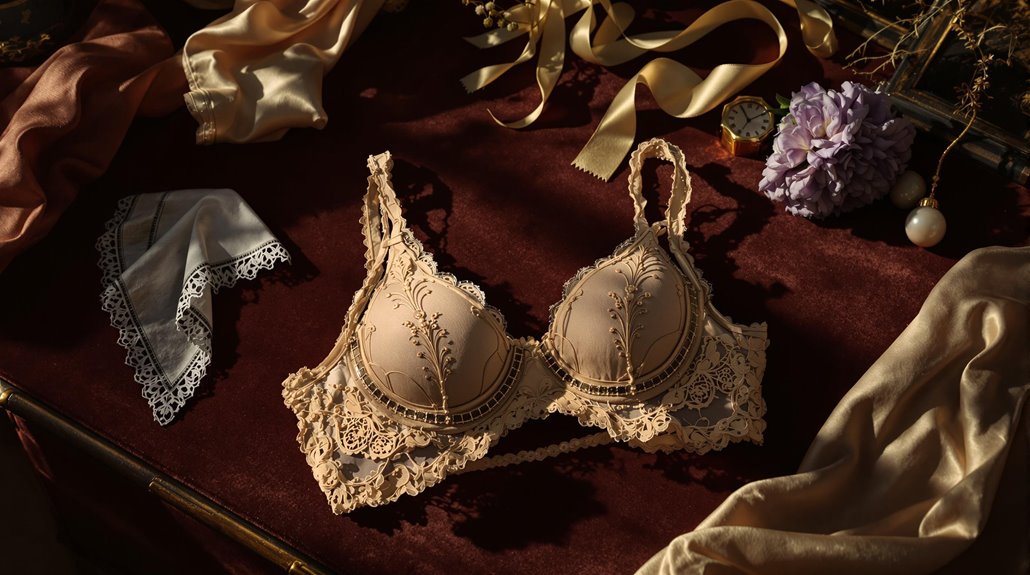
During the transformative 1920s, women's fashion underwent a radical shift as Crosby's innovative brassiere design perfectly aligned with the era's changing attitudes toward comfort and freedom of movement.
You'd find the flapper influences everywhere, from rising hemlines to looser silhouettes that celebrated a more natural, boyish figure. The intricate beadwork and fringe adorned many of these fashionable garments.
The undergarment evolution was particularly dramatic. As you swapped your restrictive corsets for lighter, more comfortable options, you'd embrace the new all-in-one lingerie pieces made from soft materials like rayon. Her original design using silk handkerchiefs became the blueprint for modern brassieres.
Designers like Coco Chanel and Jean Patou supported this revolution with clothing that complemented these modern undergarments.
You could now move freely in knee-length dresses, pair them with practical footwear like T-strap shoes, and accessorize with long pearl necklaces and cloche hats that defined the decade's signature style.
The Lasting Impact of a $1,500 Patent Sale
While Caresse Crosby's initial sale of her bra patent to Warner Brothers Corset Company for $1,500 might seem modest, it proved to be a pivotal moment in fashion history.
 first Puritan families, Crosby boldly defied societal norms to revolutionize women's undergarments.
first Puritan families, Crosby boldly defied societal norms to revolutionize women's undergarments.
After moving to Paris, she established the renowned Black Sun Press which further cemented her role as a cultural innovator.
When WWI's metal conservation efforts pushed women away from corsets, Crosby's design offered a practical alternative that aligned perfectly with changing times.
The bra's comfort during physical activity made it ideal for women's evolving roles.
Through Warner's mass production capabilities, what began as a small Boston workshop became the foundation of today's modern lingerie industry.

